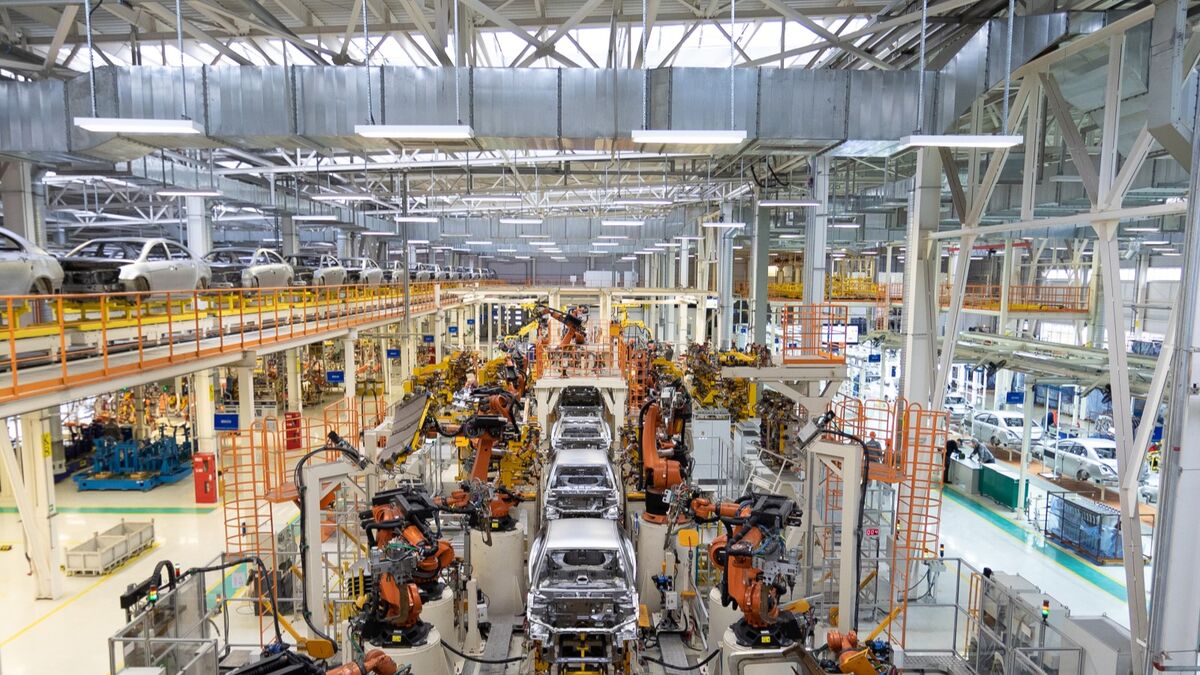- Production and inventory may affect top deals
- Vehicle production shuttered for more than six weeks
- If car buying ramps up soon, popular models could be in short supply
- Deals may dry up on trucks and SUVs
- Inventory and incentives may remain strong for small cars and SUVs
Even in mid-April, at the peak of stay-at-home orders, there were car buyers out there. Many were shopping and buying online, using new digital retailing tools like Kelley Blue Book’s Dealer Home Services. More than 635,000 new vehicles found new homes last month. And while that was a drop near 50-percent from normal, it was better than many analysts had expected.
That’s the good news.
The bad news? Automobile factories around the world have been mostly closed for more than six weeks and are only now beginning to restart production. And the factories will be running haltingly for the foreseeable future, as the companies learn how to build cars and keep workers safe. As sales increase and production lags, inventory – vehicles at dealerships and available for sale – will become a big factor in determining the price of your next purchase.
Why inventory matters
According to Charlie Chesbrough, senior economist at Cox Automotive, parent company of Kelley Blue Book, “How much inventory is too much or too little depends on the trajectory of vehicle sales. There may be sufficient inventory if sales stay weak through the summer. However, if buyers return more quickly in May and June, inventory levels will fall further.”
How quickly manufacturers ramp production back up and the types of vehicles they build will also have an impact. Chesbrough adds, “And that means buyers can’t be choosey. There may be plenty of vehicles on the lots, but maybe not the color or trim the buyer wants.”
According to the numbers analyzed by Cox Automotive, the total number of new vehicles in inventory at the beginning of May was around 3.3 million vehicles. That may sound like a lot, but it’s at its lowest point in more than a year. In early May 2019, these stocks were closer to 4 million. If shoppers return to dealerships more quickly than production can resume, dealers will be facing serious shortages.
What to expect from Memorial Day sales events
Traditionally, Memorial Day Weekend is an anchor for major sales events. Given the uncertainty in the market, this year may see a mixed bag of less top deals on vehicles that were slow-moving before the lockdown and few, if any, on the models that continue to sell well.
Most automakers have been very aggressive with incentives including 0-percent financing for up to 84 months across entire brands. In April, more than 20 percent of buyers took advantage of these deals. That’s much higher than the typical take rate of less than 5 percent. And there are plenty of other incentives in place to help make car buying easier in the time of social distancing.
As inventory shrinks though, vehicle shoppers can expect to see fewer incentives, especially those that cover all models in the range. We will see a return to more targeted deals that cover slower-selling models. Payment deferral programs and other buyer assurance programs will likely wind down as the economy ramps up, although some makes have extended their offers. VW announced it will continue its program through June 30.
What’s in short supply
Looking at individual brands and segments, inventory levels differ across the industry. Pickup trucks and SUVs remain the hot segments. In March and April, pickup trucks were the number one best-selling segment; in April, for the first time, pickup trucks outsold passenger cars. They continue to outpace all other segments for shopping on Kelley Blue Book.
The Detroit automakers are heavily focusing on restarting full-size pickup truck production, particularly Chevrolet and GMC. The new full-size from General Motors was rolling in January and February, and Chevy had recaptured the second best-selling spot from Ram. But now GM is facing short supply, particularly compared to Ford and Ram, and that will mean less choice for customers in the near term.
Kia and Subaru dealers may also be wrestling inventory issues right now. Both had some of the industry’s lowest inventory numbers in early May. Kia restarted one of its assembly plants on May 4, home to the popular new Telluride 3-row SUV. But the Georgia-based operation is running just one shift, and they’ve had to adjust to supply chain issues caused by COVID-19-related problems. Volkswagen, too, with plants closed across Europe, Mexico, and the U.S., is low on inventory, so vehicle selection might be tight.
What you’ll find on dealer lots
On the other end of the scale, some brands are bulging with inventory right now, including Fiat and Mini. Sales of small cars have been slow, so inventories there have not been impacted as severely during the production shutdown. They had plenty of inventory before COVID-19 and they have plenty now. Buick, which is stepping out of the passenger car business to focus on a trio of SUVs, is also sitting on a lot of unsold vehicles as sales have slowed. Also, on the luxury side, Acura, Cadillac, Jaguar, and Land Rover have more inventory than most right now.
The Kelley Blue Book team believes trucks, vans, and heart-of-the-market SUVs will do best as U.S. auto sales recover. Subcompact and compact car sales, along with subcompact SUVs activity, will be slower. Buyers in these segments tend to be first-time buyers and may have been hit harder by unemployment during the shutdown. In terms of inventory, choice, and incentives, these segments are a good place to start shopping.








